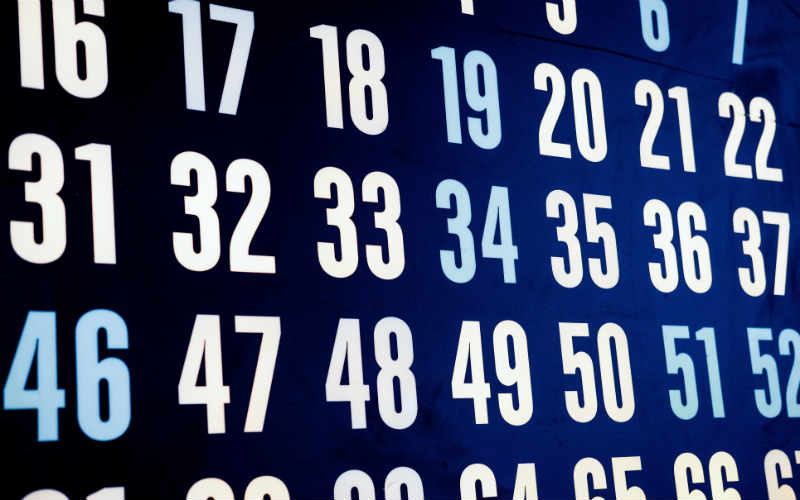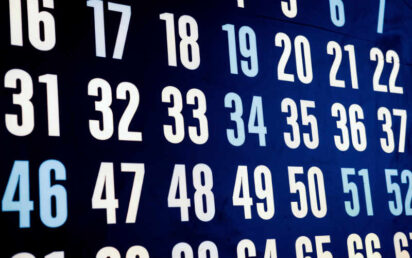Bingo began way back in 16th-century Italy as a lottery game. It spread across Europe, then reached America by the 1920s.
Bingo became a favourite in US travelling carnivals and with churches that used it for fundraising. The name is said to come from someone mishearing the word “beano,” which is a similar game using beans to mark cards.
In Britain, bingo grew rapidly in the last century. New gambling laws allowed large, licensed halls, and by the 1980s, over 1,600 venues operated across the UK.
Millions played each week, and it became a social ritual for many. At one point more than half of all British women played.
The digital shift came in the late 1990s when online bingo launched. By 2005, mobile play had started.
By 2024, the UK online bingo market was worth over £1.3 billion. New players now join daily and bingo has never been as popular as it is today.
What is the appeal?
Bingo is a simple numbers game. Players get cards showing a grid of numbers.
A caller draws numbers at random. If a number matches one on a player’s card, it gets marked off.
The aim is to complete a winning pattern. This could be a line, four corners, or a full house – all using marked-off numbers on the card.
Traditional UK bingo uses 90 numbers. US versions often use 75.
Online bingo sometimes adds themes, jackpots and chat features. Games are fast, often under 10 minutes long.
Some offer cash prizes, others use vouchers or bonuses. It’s quick, easy and based entirely on chance (with a bit of concentration too).
Online bingo
Online versions transformed the game. It’s no longer just for pensioners in village halls.
Digital platforms have made it faster, flashier and far more social. Players can join games anytime from their phones or laptops.
In 2024, online bingo in the UK alone generated over £1.3 billion in revenue.
New formats helped. Speed bingo, themed rooms and massive progressive jackpots created more modern excitement.
Many sites now offer live chat, quizzes and bonus games.
In-app bingo also surged, with mobile traffic now accounting for over two-thirds of all online bingo play.
This digital boom hasn’t killed traditional halls – it’s helped revive them.
Some clubs now blend live games with online features. Events mix music and bingo venues like Bongo’s Bingo attract sold-out crowds with DJs and prizes.
Online bingo reinvented the game, and now the mix of chance, speed and social fun keeps players coming back. It’s now mainstream and no longer stuck in the past.
The bingo experience
The experience of playing has changed completely. It’s now faster, louder and more interactive.
Online bingo rooms run every few minutes. Players don’t wait around.
Auto-daub features mean numbers are marked automatically. That leaves players free to chat, join side games or chase bonuses.
Themes are everywhere. You can play bingo in a jungle, at the beach or in outer space.
Tombola’s “Bingo Lite” is stripped down for mobile. Mecca Bingo’s “Emoji Bingo” uses symbols instead of numbers.
These different formats attract younger audiences and keep the game fresh.
Many sites now use livestreamed presenters who call numbers, crack jokes and interact with players in real time. It brings personality and entertainment to every game, so some sessions feel more like a talk show than a game.
In physical venues, the atmosphere has shifted, too.
Bongo’s Bingo is a prime example that combines traditional number-calling with dance-offs, sing-alongs and novelty prizes like giant inflatables and bottles of bubbly. It attracts hen parties, students and corporate groups.
The modern bingo experience is less about silence and focus, more about fun and connection. Whether online or in person, players want energy, variety and social interaction.
The future for bingo
Bingo has come a long way. From quiet halls to vibrant online rooms, the game has adapted and thrived. It’s now a fast, flexible and highly social experience.
New technology, faster mobile access, and innovative formats have opened the game to new generations. Players can join from anywhere, at any time, and enjoy themed bingo, live hosts and interactive features.
Real-world bingo has also evolved with events like Bongo’s Bingo showing there’s demand for social, high-energy versions of the classic game. Venues are becoming entertainment hubs not just bingo halls.
The future looks bright. Augmented reality, personalised game modes and bigger jackpots are already on the way.
Crossovers with TV shows, influencers and streaming services are likely soon. As the game gets faster and smarter, its popularity will only grow.
What hasn’t changed is bingo’s appeal, simplicity and shared excitement. That’s why it keeps winning new fans.
Bingo has never been better.


